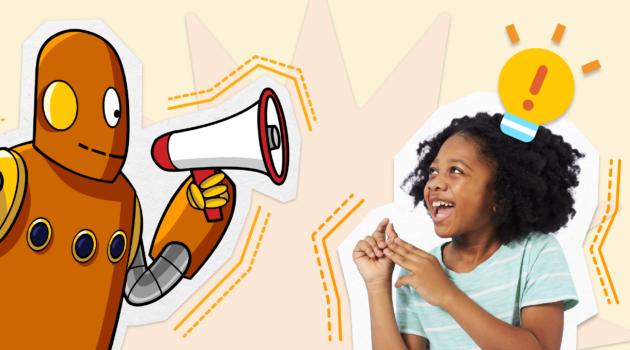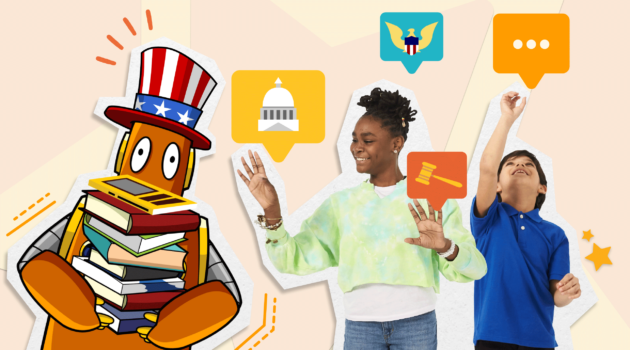Teaching Strategies
6 Cross-Curricular Ways to Engage Learners with Songwriting

No matter the subject you teach, incorporating songwriting into your practice can both engage students and foster deeper understanding of the content. That’s because songwriting activates each of the 4 C’s of 21st century learning: communication, collaboration, creativity, and critical reflection.
Following are six cross-curricular tips for how to effectively integrate songwriting into your lesson plans to increase engagement, develop social and emotional learning skills, and produce a unique, fun demonstration of learning.
1. Reap the Benefits of Songwriting
You don’t need to be a songwriter, or even vaguely musical, to benefit from incorporating songwriting into your teaching. Channel your students’ musical creativity to guide the process, allowing kids who otherwise might go unnoticed a moment to shine. Got a student who won’t stop tapping his pencil? Make them a percussionist! Do you have a shy student who studies cello? Give them a solo.
2. Build Background First
Before breaking out instruments or tablets, students need to build background about the meaning of the content they are writing a song about. Whether learning about causes and effects of the Civil War, how to isolate an algebraic variable, or a literary character’s ambitions, students need to synthesize a lot of different information.
With over 1,200 topics across the curriculum, BrainPOP is a great resource for building background knowledge about the topic of their songs.
Students can use concept mapping to organize and connect the ideas they want to include to develop their songs’ stories. Start with a guiding question. Then have students brainstorm the key ideas and identify how they connect, referring back to their maps as they compose their songs.
3. Collaborate!
Once your students know what they want to write about, the songwriting process can begin. If it’s early in the year or semester, start by surveying your students. Find out who plays instruments, who sings, and who has experience recording music. Also, have a class discussion about the artists and the genres students listen to and enjoy most. Knowing their interests and preferences will enable you to meaningfully engage them in the process. Don’t worry about aligning everyone’s interests—a collaboration between a classical pianist and a trap music fan could be amazing, or “fire,” as the youth say.
Start with small groups. Assign roles or let students choose, but ensure that each member has a responsibility, either individually or with a partner, like creating the rhythm section, writing lyrics, or developing the vocal melody. Want to go big? Larger groups can add lead and backup vocals, brass and wind instrumentalists, bass and live percussion! Songwriting supports the expression of learning with as few or as many resources as you have.
While some students may be able to hit the ground running in the songwriting process, others may need more structure.
Suggest these responsibilities to get started:
- Instrumentalists can create an initial groove or beat.
- Lyricsts can adapt information into verse.
- Vocalists can sing or rap.
4. Engage All Learners with Multiple Entry Points
Students work at different paces, and that’s okay. Composing songs can take some time. If one group created their song in a snap, prompt them to them to add complexity to their composition. If they have a groove for the verse, ask for a chorus. If they have a verse and chorus, ask for a bridge. Suggest a solo for an instrumentalist. Recommend beefing up the intro, or expanding the outro.
If students are struggling lyrically, encourage them to delve into the emotion and message of the song. If they are explaining how photosynthesis works, for example, propose different musical tableaus for each part of the process.
Have visual artists in the group? All music these days comes with a thumbnail graphic—a perfect job for a student who loves doodling. Introduce them to typography and urge them to create a lyric video.
For the student with nonstop ideas, let them take a shot at managing people and have them direct a music video. Invite students to use BrainPOP’s movie-making tool, Make-a-Movie, to bring their song to life!.
5. Build Metacognition and Critical Reflection
Thinking about thinking and the choices students make while writing their songs deepens the learning process. Once your students have a draft of their songs, encourage reflection with these questions:
- Why did you choose to make that groove?
- Why did you choose those lyrics to address the subject matter?
- How do the melodies make you feel?
- Why is your song either dissonant or consonant?
- What do you wish there was more of, and what do you wish there was less of?
When students reflect about the choices they have made in the song, they acknowledge the purpose behind their decisions.
Ideally, the musical choices they make will align with the content. For example, if the song is about how to solve mathematical inequalities, they may musically signal the need to switch the inequality sign when dividing by a negative number by changing the key.
6. Support Social and Emotional Learning
Recognize that creating and sharing a song is a vulnerable act. Some students may want to tinker away at the song and may never be quite satisfied. It has been said that lightning strikes three times on a creative work. You have the initial inspiration, you revise it, and then you finalize it. Reinforce that composing is a process. You may want to watch BrainPOP’s “Setting Goals” movie to review how to set goals that are specific, time-bound, and attainable.
And remember, perfection can be the enemy of the good!
Lastly, celebrate the bravery your students are displaying. Writing a song is not easy. Putting your words or your feelings into a song musically is an action of revealing oneself, which some students may relish and others resist. Establish feelings of trust and risk-taking and focus on student successes, creating a safe, inclusive, and fun vibe. And, perhaps provide a snack!






